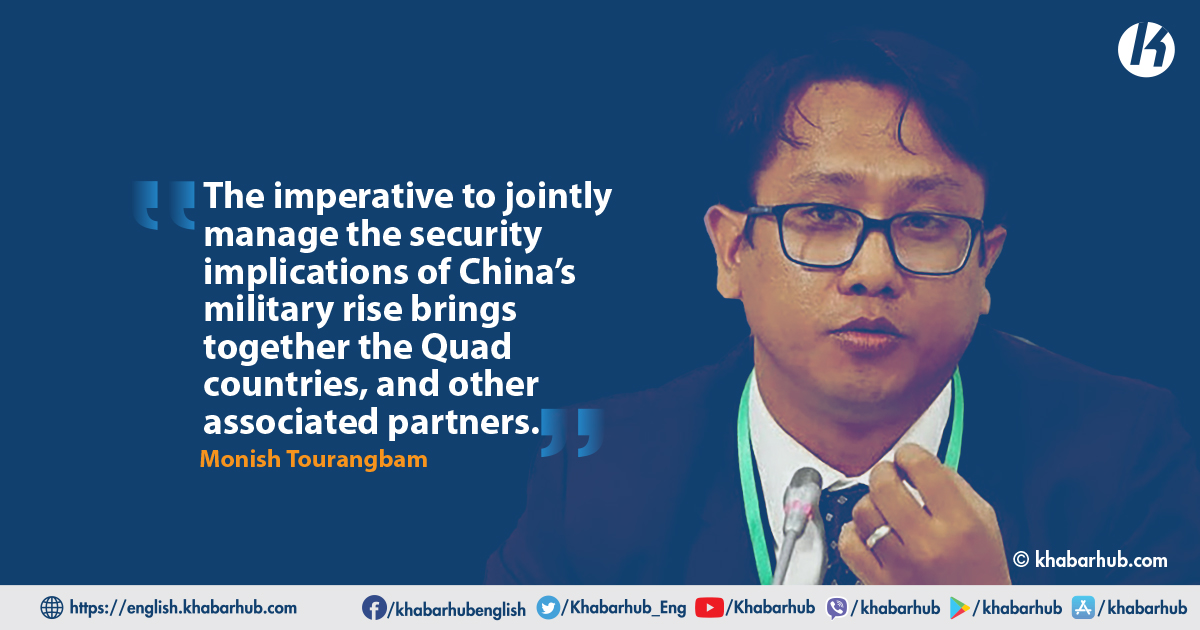Later this month, the leaders of the Quadrilateral Security Dialogue (Quad) member countries, the United States, India, Japan and Australia will be meeting in person in the United States. This follows the first virtual summit of the Quad leaders amidst the pandemic earlier this year.
The Biden administration, despite a rhetorical disdain of Trump’s foreign policy, has largely maintained continuity, and the priority accorded to the Indo-Pacific is one of them.
The structural compulsions driving the multifaceted great power competition between the United States and China are the overarching strategic reality of the Indo-Pacific. Consequent to this dynamic is the impact on the foreign policy choices of several stakeholders in the new geopolitical construct of the Indo-Pacific.
There is no Indo-Pacific minus the ramifications of China’s rise and there is no Quad minus the assertive turn in China’s rise.
China’s callous handling of the COVID-19 outbreak from Wuhan, its military aggression in the Western Pacific and the Sino-Indian border, has raised expectations from what the Quad could deliver in the Indo-Pacific.
Another strategic reality defining the Indo-Pacific region is a stronger move towards multipolarity, yet with uncertain parameters regarding the sustainability of this power construct amidst the inherent asymmetry in capabilities and resources.
At present, although the Quad is a loose grouping of four democracies aimed at building a free, open, inclusive and rules-based order in the Indo-Pacific, the risks and benefits of a more formal alliance have entered academic and policy debates.
While a Quad with a formal structure, might lend clarity to the intent and expectations from the member countries, a loose grouping, apparently gives more traction to each countries’ position and operations.
Even as the probabilities of an enlarged Quad plus emerges, aligning the strategic orientations of the four democracies remains easier said than done.
Such a dilemma of coordination and consensus in the Quad, more than any other factor, is reflective of another strategic reality of the Indo-Pacific, which is, the interdependence created by Chinese economic footprints.
The imperative to jointly manage the security implications of China’s military rise brings together the Quad countries, and other associated partners.
A visible aspect of this consensus to deal with China’s military assertiveness is the growing military-to-military interoperability exercises among the Quad countries, particularly in the maritime sector.
Another strategic reality in the Indo-Pacific region relates to the question of the area of responsibilities and burden-sharing in the sub-theatres of the Indo-Pacific.
While the earlier Quad meetings were known for their lack of a joint statement, the first virtual leadership summit came out with a joint ‘Spirit of the Quad’ statement.
Another strategic reality defining the Indo-Pacific region is a stronger move towards multipolarity, yet with uncertain parameters regarding the sustainability of this power construct amidst the inherent asymmetry in capabilities and resources.
The pivotal role of major players other than the United States and China are apparent and the impact of their balancing acts are undeniable factors in how the Indo-Pacific security architecture shapes up.
However, the unmistakable gap between the national powers of the United States and China vis-à-vis other major powers in the region complicates the permutations and combinations of a multipolar Indo-Pacific.
The presence and implications of asymmetry in the Indo-Pacific raise dilemmas of foreign policy choices for a number of countries that are desirous of practicing their strategic autonomies while aligning their growing threat perceptions coming from an assertive China.
The power gap witnessed in the Indo-Pacific, combined with China’s growing intent to shape multilateral institutions in its own image, creates further challenges on the path to a rules-based order in the Indo-Pacific.
The global security and financial order that the United States helped build and spearheaded post-World War II has been weakening. Nevertheless, the new order is yet to crystallize and many assumptions cloud the quest for clarity.
China’s economic rise has led to new dimensions in the global distribution of public goods, impacting global supply chains and connectivity.
The rise in China’s military and its power trajectory has thrown up questions of reimagining America’s alliances and partnerships in the Indo-Pacific.
In the final analysis, the shape of things to come in the Quad should be determined by a sober reading of the strategic realities in the Indo-Pacific region.
To what extent countries wary of China’s rise will band together, and turn towards the United States remains a matter of academic debate, as well as a policy question.
Another strategic reality in the Indo-Pacific region relates to the question of the area of responsibilities and burden-sharing in the sub-theatres of the Indo-Pacific.
What should and what could each member of the Quad contribute in terms of building an integrated deterrence against an intransigent China?
India’s predominance in the Indian Ocean is apparent. But in the midst of China’s growing material influence among the Indian Ocean littorals, should India focus on augmenting its strength solely in the Indian Ocean?
Should Japan and Australia chalk out their respective areas of immediate responsibilities and not overstretch capabilities?
Alternatively, should the United States, given its force presence and experience, spearhead a more integrated deterrence, with cross-cutting areas of responsibilities and a clearer implementation of military-to-military interoperability beyond one’s own strategic backyards?
In the final analysis, the shape of things to come in the Quad should be determined by a sober reading of the strategic realities in the Indo-Pacific region.
(The Author is a Strategic Analyst based in India and the Honorary Director of the Kalinga Institute of Indo-Pacific Studies (KIIPS)









Comment